This self-build project for the practice director Jake Edgley’s own family home, was initiated, designed and contracted by Edgley Design. The house was awarded a RIBA London award 2015 and shortlisted for the Stephen Lawrence Prize 2015. Photography by Jack Hobhouse.
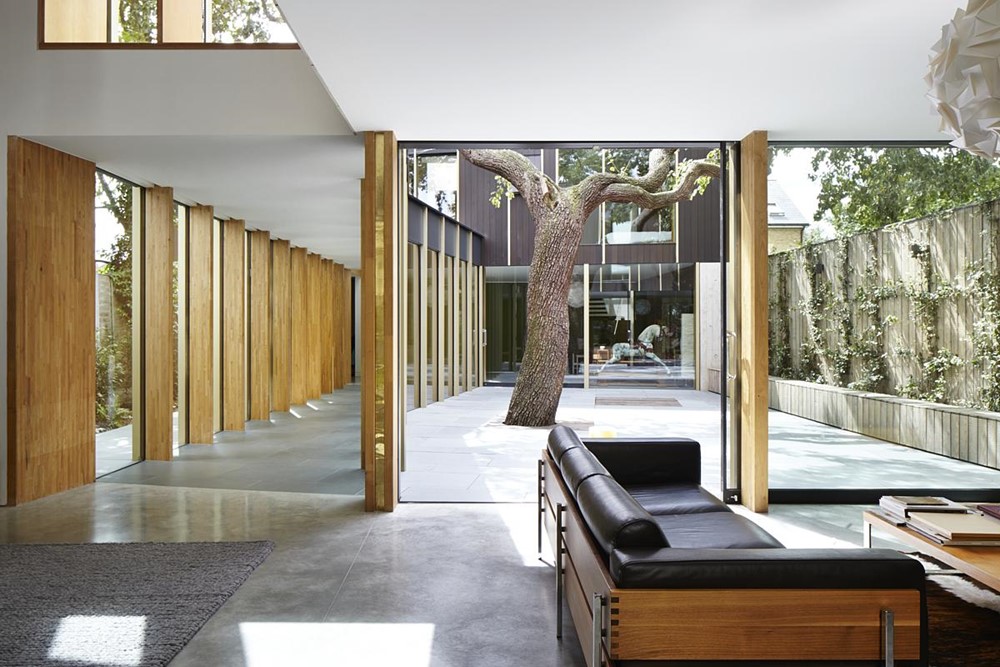


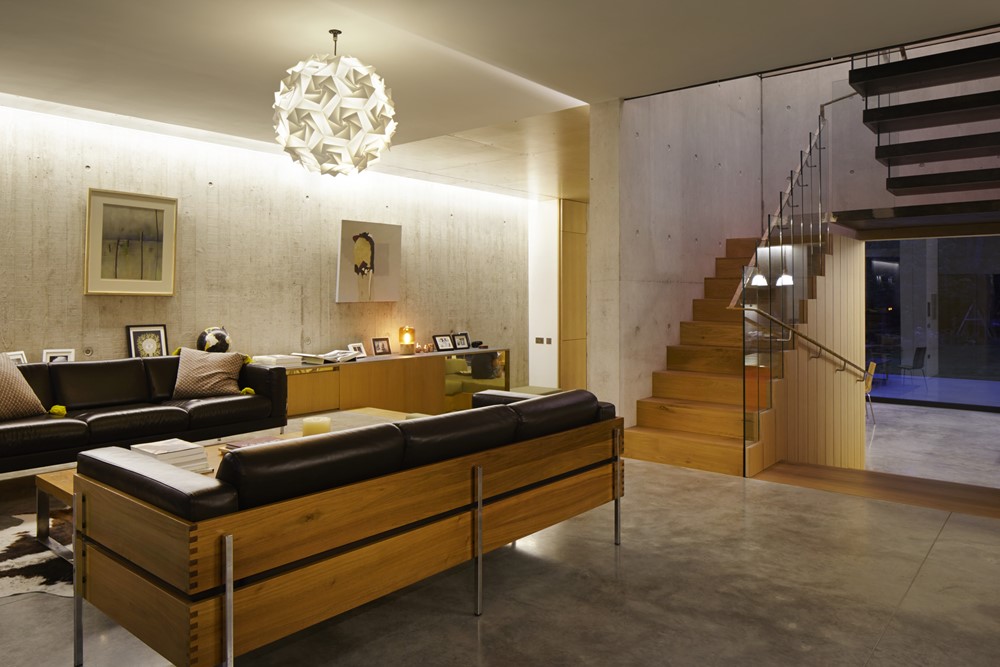
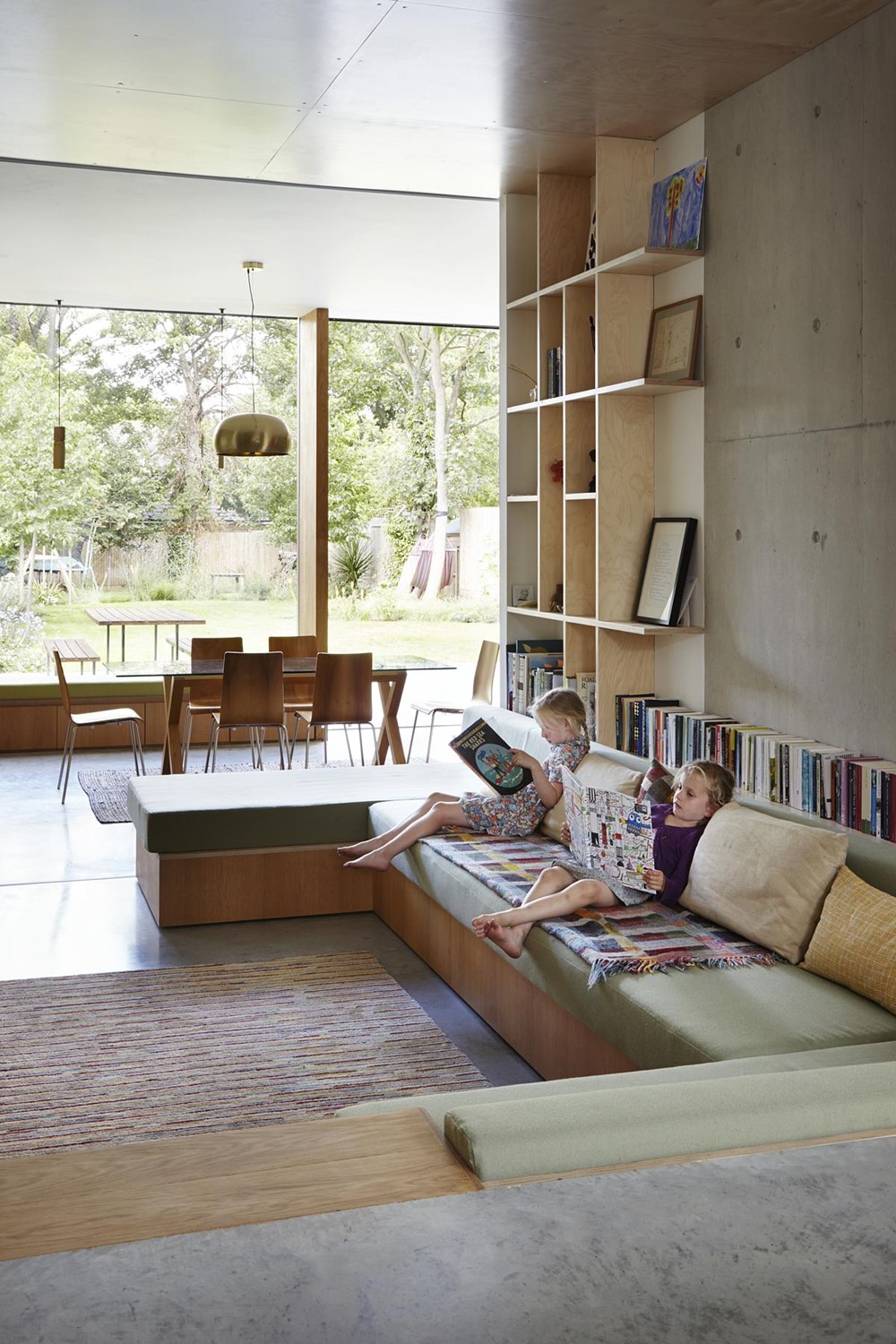
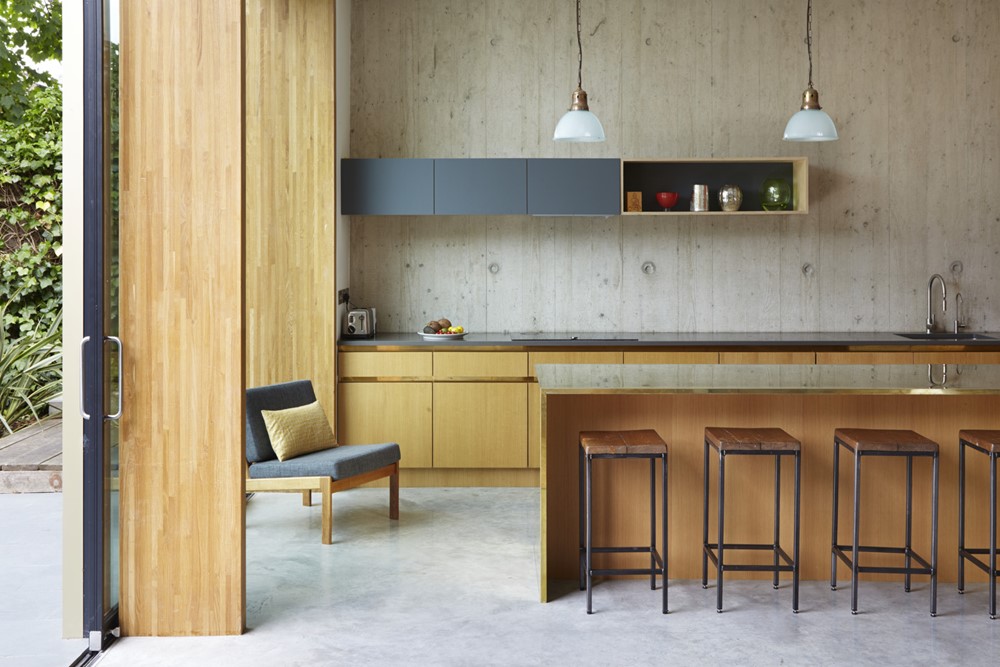



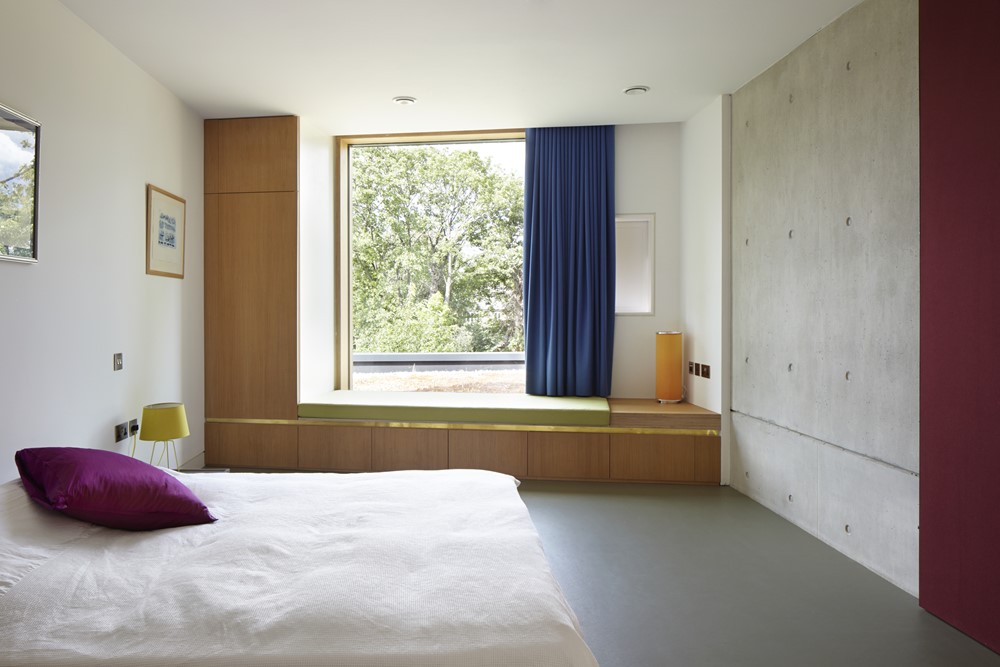
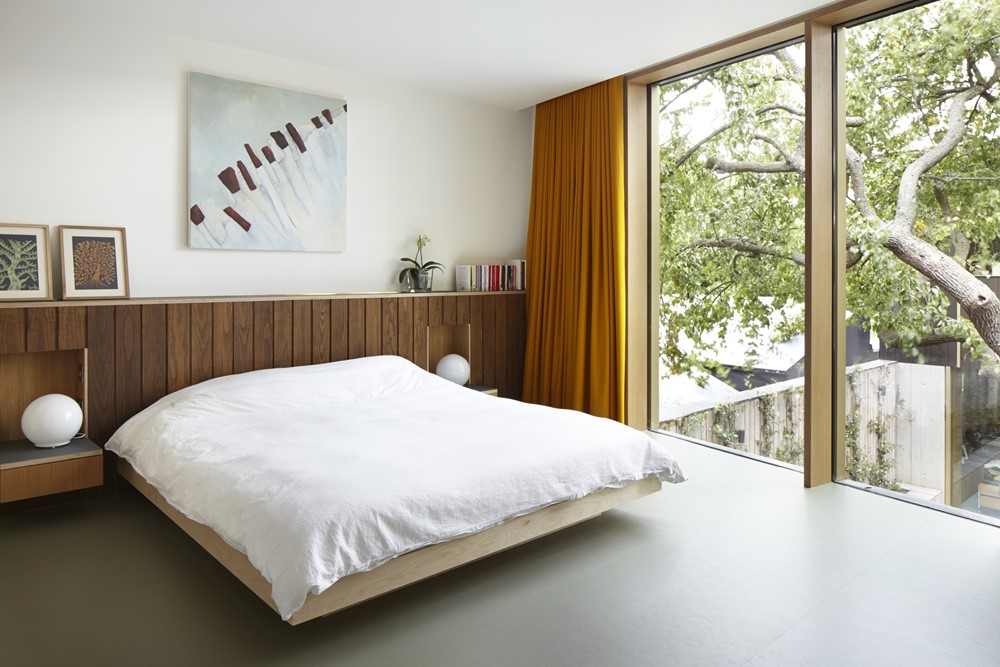
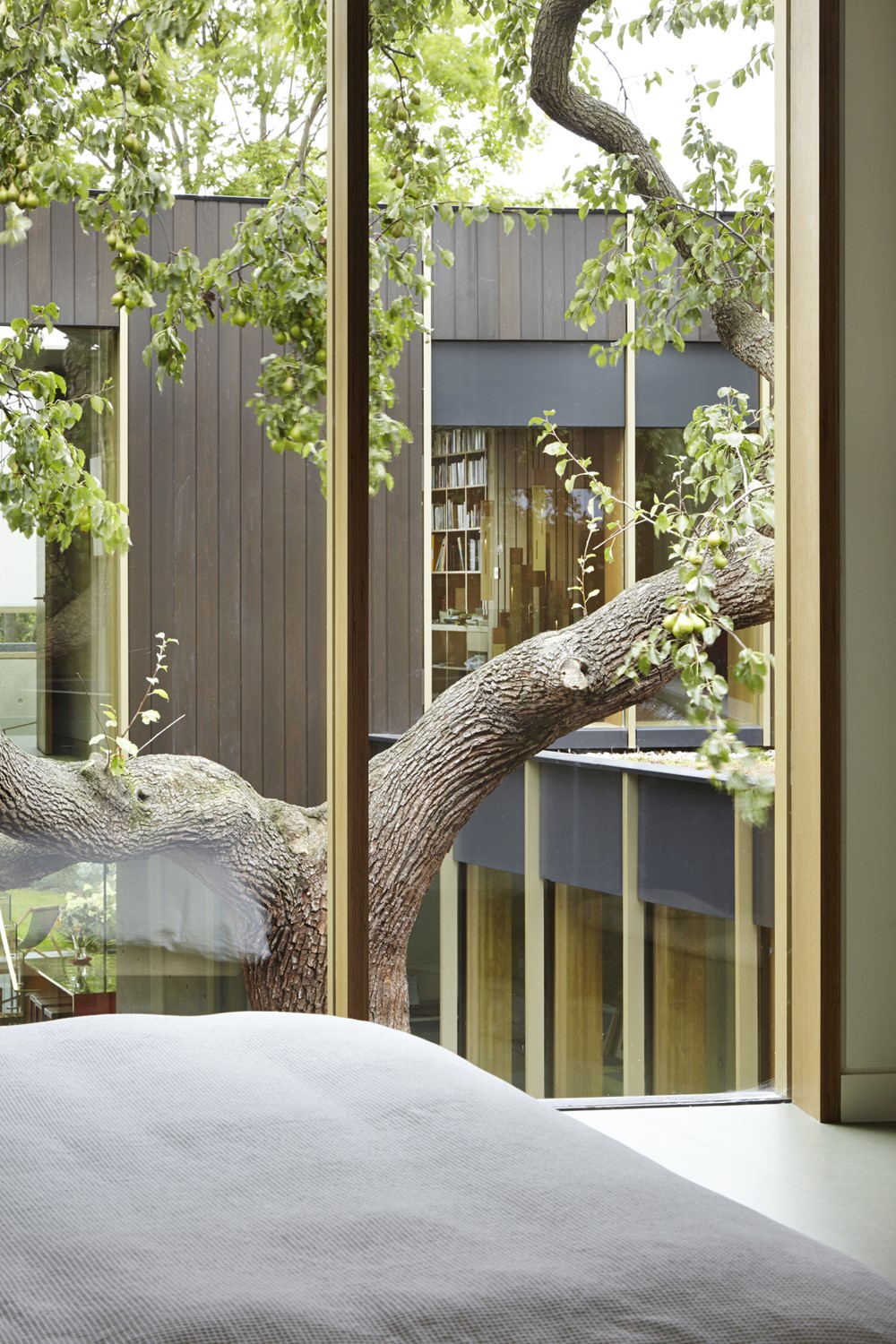



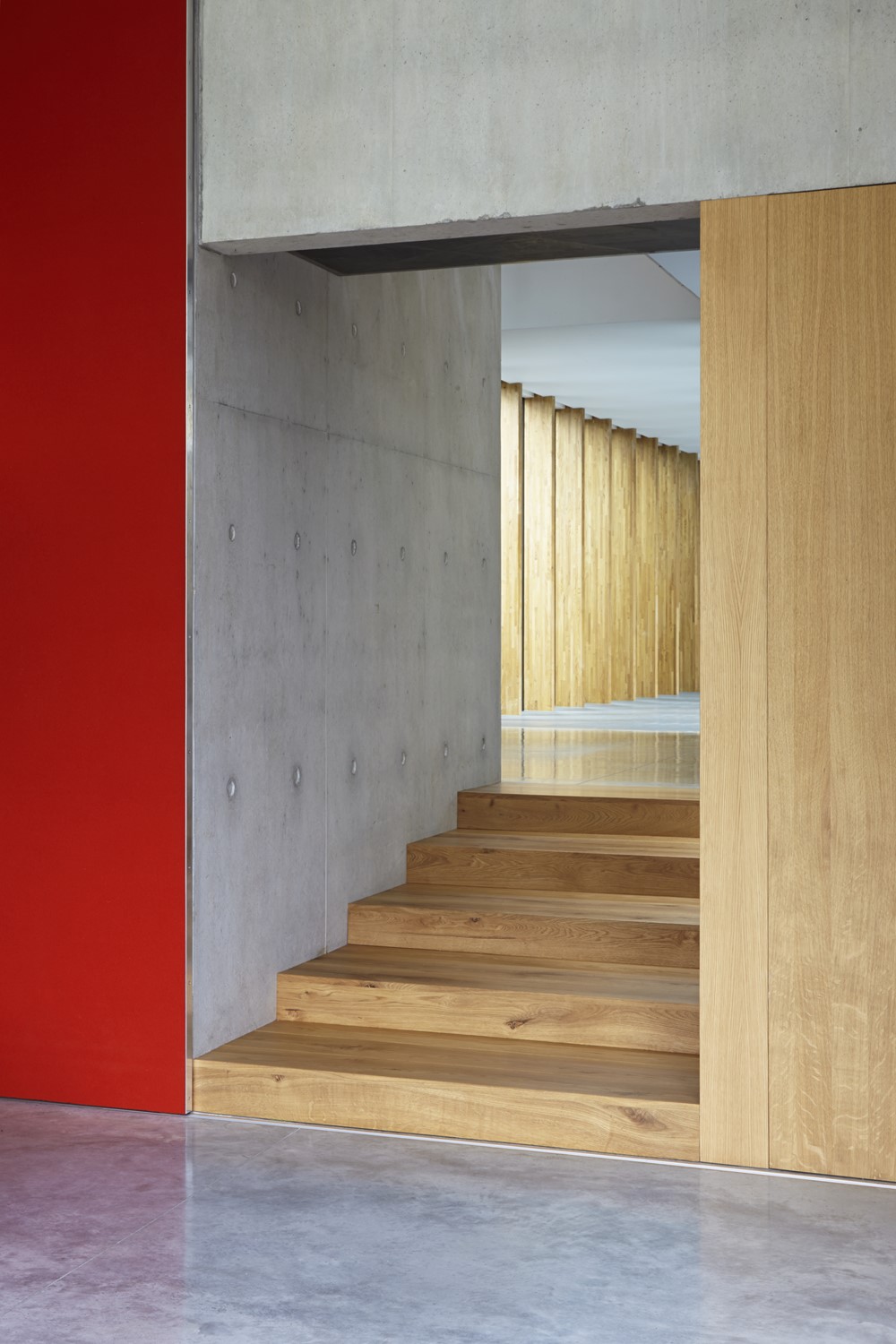


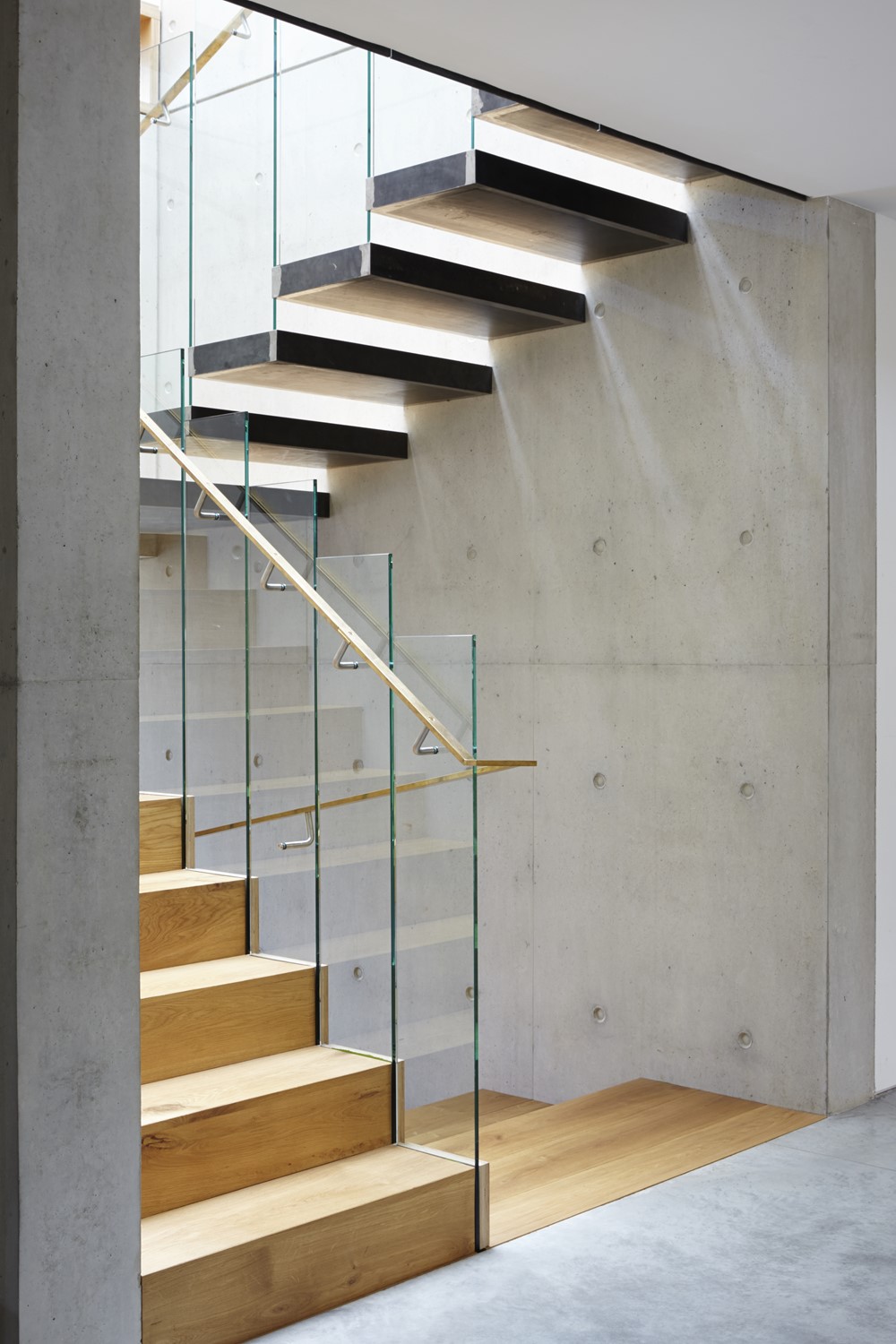
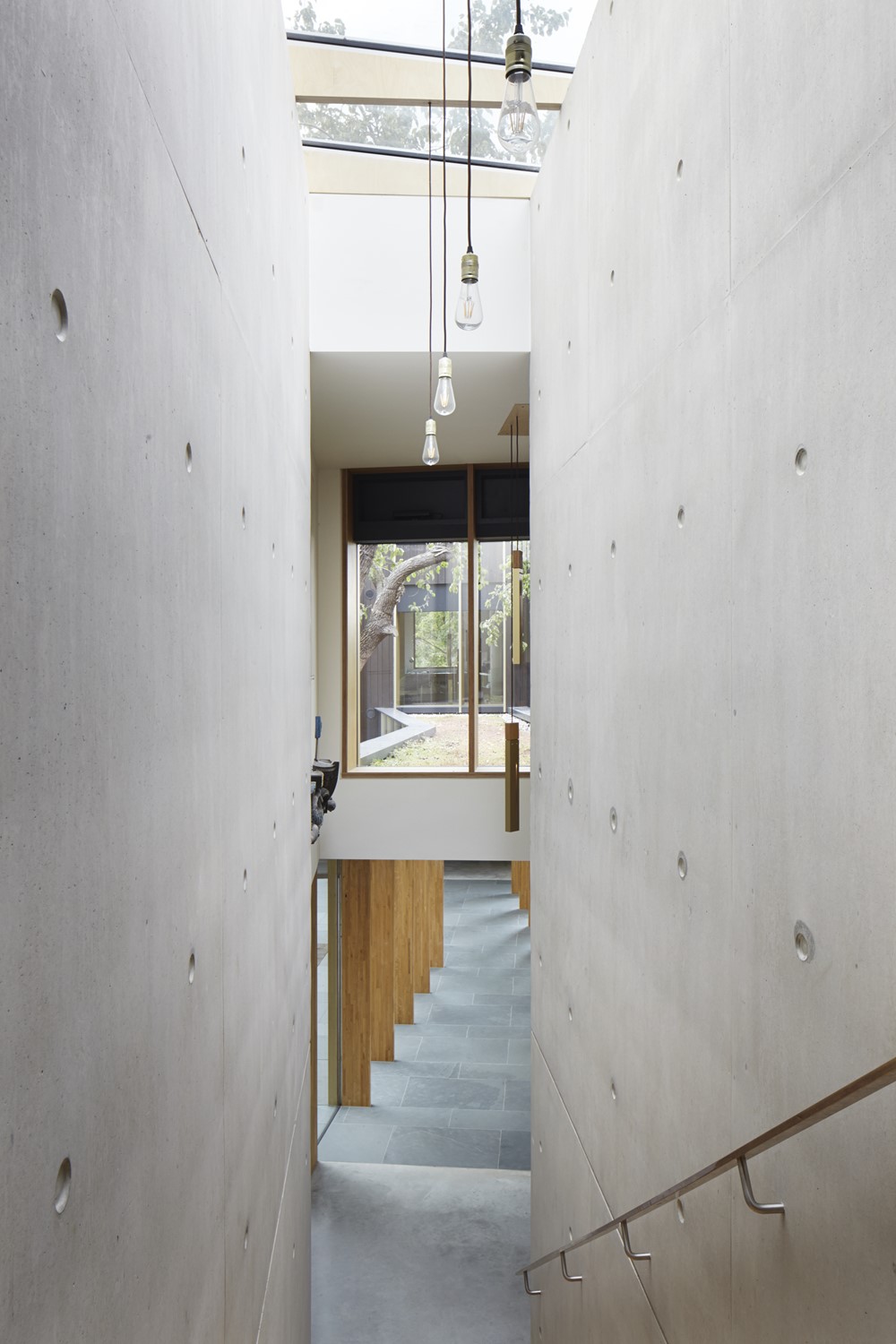




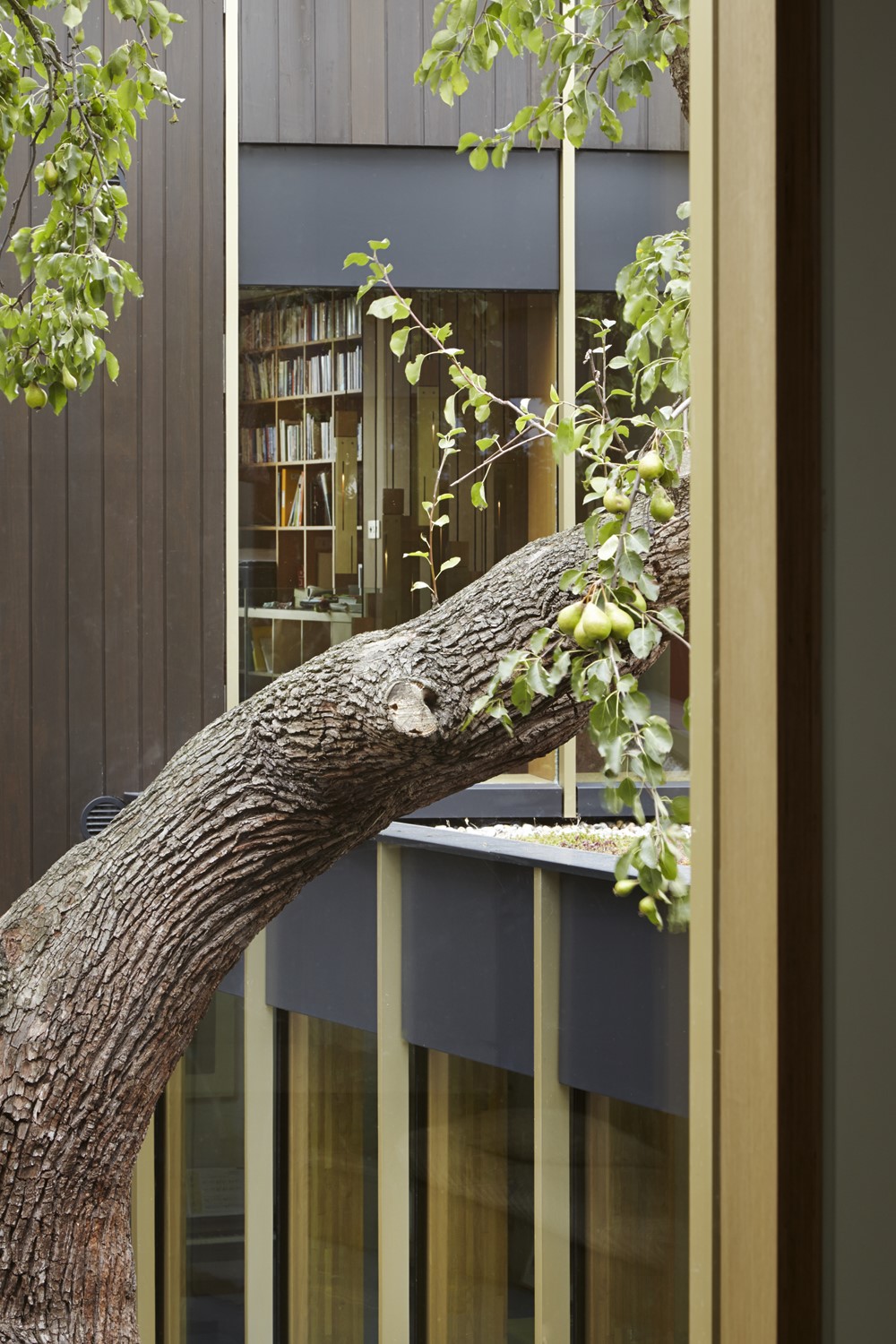
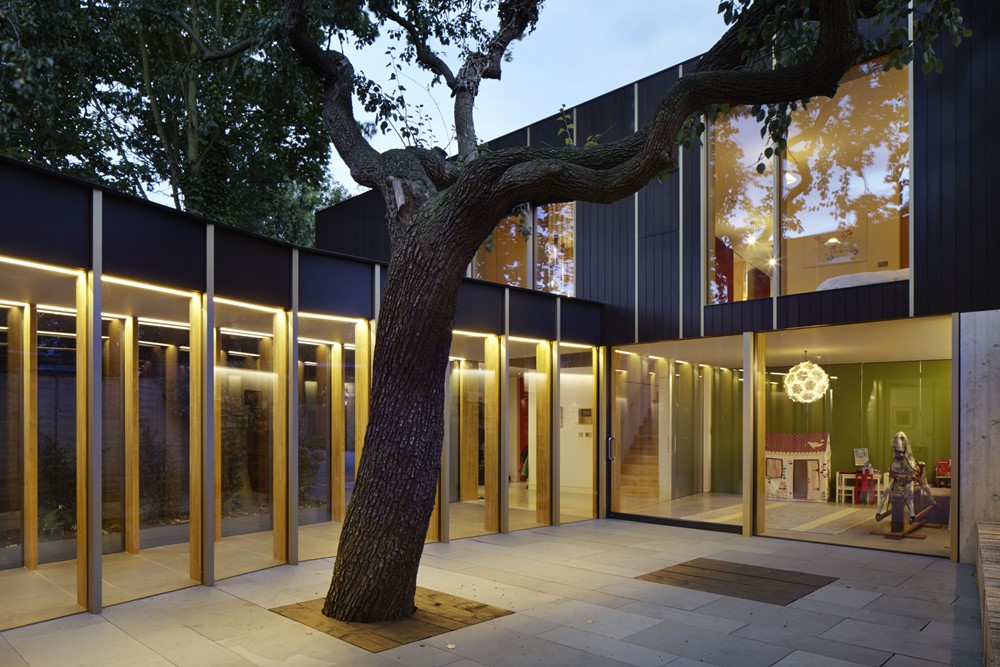

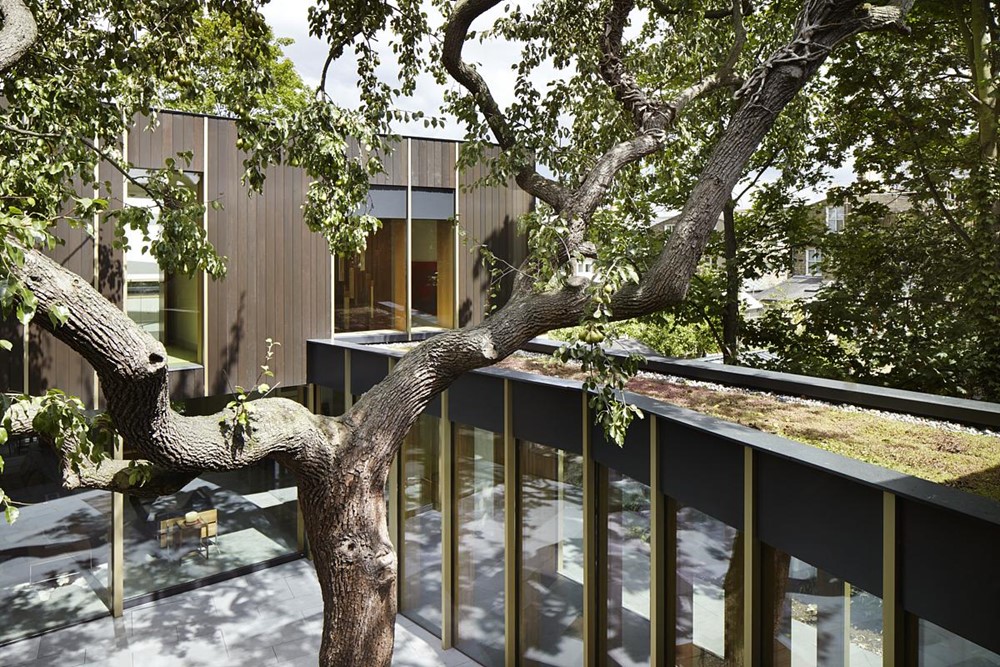
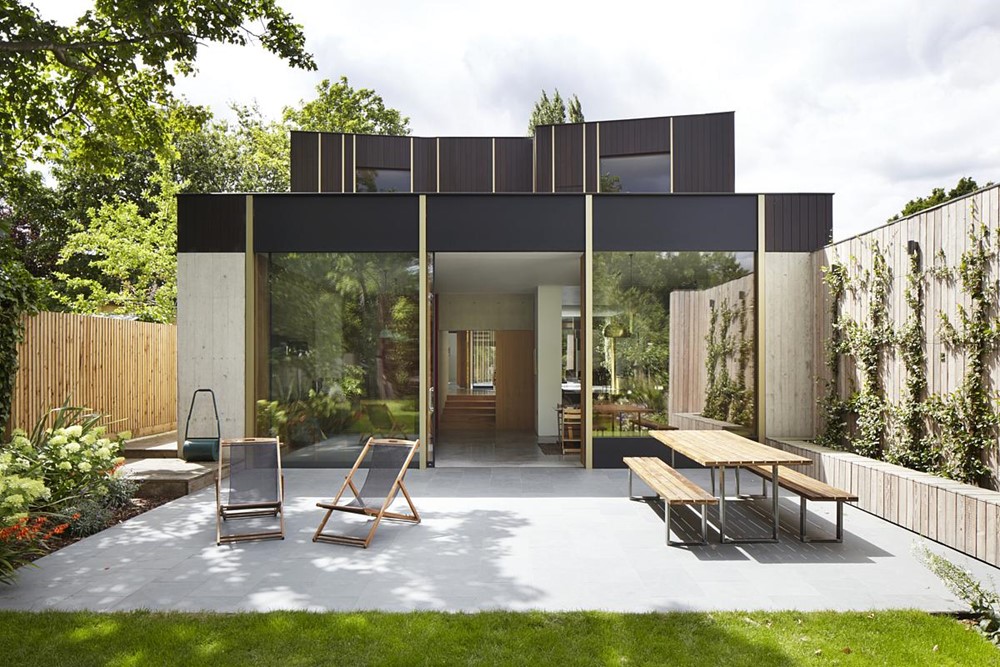
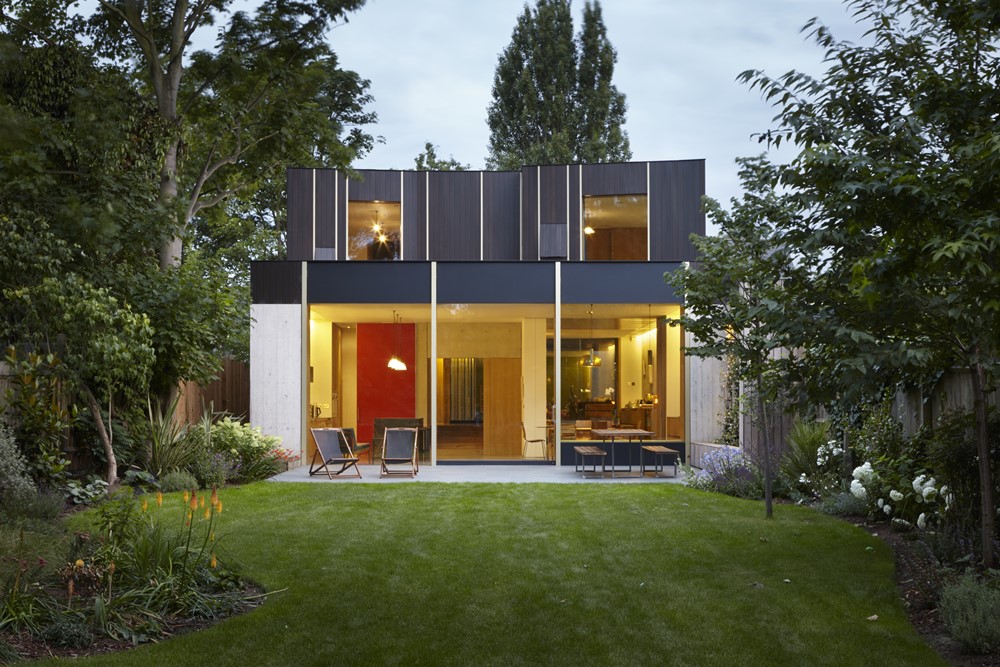




The concept for this backland house, completed in Summer 2014, began with a 100 year old pear tree, a remnant of the site’s history as a Victorian fruit orchard. The house has been built around this tree, creating an internal courtyard that brings light and air to the centre of the plan, while turning the house inward to remain private from the surrounding terraced houses.
The building rests on pile foundations to prevent damage to the trees and has a structural diagram of concrete external walls to the ground floor, where the walls meet the ground and are exposed to the weathering of nature and occupants, to provide a robust finish. The first floor is constructed as a single storey, lightweight, timber framed box spanning these walls, with two central concrete staircores to provide lateral stability and create dramatic, naturally lit spaces from the rooflights above.
We wanted to preserve the character of the site and evoke its history through the building, which has been designed to blend into its wooded backland context. To this end there is a simple aesthetic concept to emphasise the vertical articulation of the building, with views through the building defined by slender vertical elements that echo the experience of looking through trees.
The ground floor walls are cast in concrete with vertical timber formwork, giving a vertical panelling effect with an expressive natural grain and texture that blends into the surroundings. The locally sourced larch formwork was carefully chosen to give a relief that was prominent but refined to suit the domestic scale of the building. To reduce the environmental impact of the construction, these larch boards were re-used to build the external timber clad walls to the courtyard and garden.
In contrast to the external walls, the internal stair core has a smooth finish to give a softer surface where it is touched by the inhabitants. To contrast the matt concrete finishes of the walls, a polished concrete floor was installed throughout the ground floor which extends the verticality of the slender glulam columns through their abstracted reflections.
The house features bespoke, on-site crafted joinery made from oak veneered ply with brass detailing. Two handmade chandeliers, constructed from leftover gold aluminium sections from the cladding, hang in the double height void spaces at either end of the glass link.
The building has been designed as a ‘healthy’ house with organic, solvent-free paint throughout and zero-formaldehyde materials to create a healthy internal environment.
Sustainable features of the house include thermodynamic roof panels for the hot water, rain water harvesting, MHRV air handling and air source heat pumps to reducing the building’s dependence on carbon intensive energy sources. Innovative concrete thermal bridge detailing using insulated blocks and non-ferrous wall ties contribute to the thermal performance of the building envelope, reducing heat loss. The concrete walls also help to regulate the internal temperature, acting as thermal mass to store heat.



